
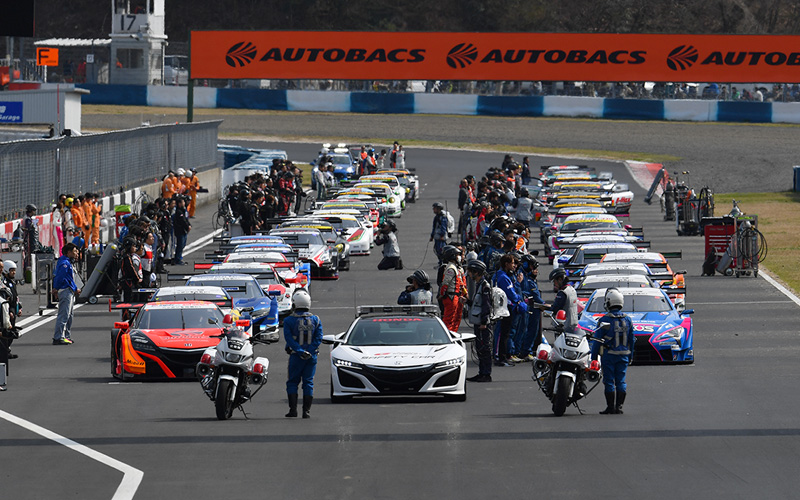
With one month left until the first round of the season (Okayama Apr. 7-8), the countdown for the season opener has begun. Teams and makers have already undertaken several test sessions, and preparations for the races are in full tilt. Concurrently, a meeting was held between GTA Co., Ltd, the organizer or the SUPER GT; entering teams for this year and the hosting circuits, etc., to go over the regulations for this season.
Regulations refer to all “rules” associated with the hosting of the SUPER GT race event, and they are reviewed and revised on a quasi-annual basis, based on considerations by the GTA, and on the past and upcoming years of SUPER GT races.
This edition of SUPER GT.net News will focus on three changes to the “Sporting Regulations” that may be of particular interest to fans.
* The following is a summery of the 2018 Sporting Regulations, and are not the official regulations, nor the explanations given by the GTA.
For the official regulations, please consult the Sporting Regulations.
Revised fuel restrictor values for the GT500 class
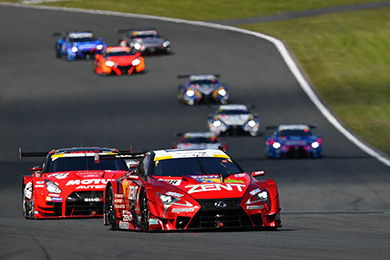
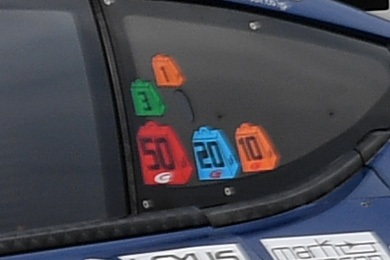
Article 23 Weight Handicap System
Since last season the weight handicap system for the GT500 class has been assigned according to four designations, and fuel flow restrictor values have been assigned accordingly. This has been done to strengthen the effectiveness of the weight handicap system, while at the same time curbing the dangers caused by excessive vehicle weight by limiting the actual ballast weight to 50kg.
For this season, the four designations will remain in place, with changes made to further restrict fuel flow when handicap weights exceed 50 kg. These changes reflect the likelihood of improvements in GT500 class cars compared to the models from last year, and an attempt at a safer and fairer race without affecting the competitiveness of the race.
GT500 class fuel flow restrictor values
| Nominal handicap weight | 0 - 50kg | 51 - 67kg | 68 - 84kg | 85 - 100kg |
| Loading weight | 0 - 50kg | 34 - 50kg | 34 - 50kg | 35 - 50kg |
| Fuel flow restrictor | 95.0kg/h | 91.8kg/h | 88.6kg/h | 85.5kg/h |
| Value from the previous year | 95.0kg/h | 92.4kg/h | 89.8kg/h | 87.4kg/h |
Change in qualifying round time, division of GT300 class into groups
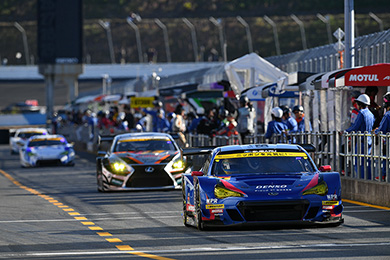
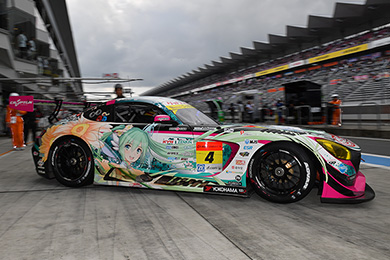
Art. 29 Practice Session (also Appendix - 7 "Knock-Out Qualifying System detailed procedures")
Due to the increase in the number of vehicles in the GT300 class, in the Knock-Out Q1 qualifying round for this season a division of the vehicles into groups (Group A, Group B) will be implemented in some cases. Although Q1 will continue to involve all vehicles by default, the new option to implement the grouping system based on the circuit will become available. GTA will announce whether or not the grouping system will be implemented prior to the race.
If the grouping system is taken, vehicles will be divided based upon their results in the previous race, with vehicles finishing in odd numbered places forming group A and vehicles finishing in even numbered places forming group B. In such cases where team results are not available, the groupings will be decided by GTA based upon past results. The top seven vehicles in both groups A and B of the Q1 sessions, totaling 14 vehicles (the same number as without the grouping system), will be allowed to proceed to Q2.
Additionally, there will be a change in the duration of the Knock-Out qualifying this season regardless of whether the grouping system is taken or not. While the session length for the Q2 has been 12 minutes until last season, this season it will be shortened to 10 minutes.
|
When the grouping system is not taken in the GT300 class |
|||
|---|---|---|---|
| Q1 | GT300 (15 minutes) |
Interval (5 minutes) |
GT500 (15 minutes) |
| ↓ | Interval (10 minutes) | ||
| Q2 | GT300 (10 minutes) |
Interval (8 minutes) |
GT500 (10 minutes) |
|
When the grouping system is taken for the GT300 |
|||||
|---|---|---|---|---|---|
| Q1 | GT300 Group A (10 minutes) |
Interval (5 minutes) |
GT300 Group B (10 minutes) |
Interval (5 minutes) |
GT500 (10 minutes) |
| ↓ | Interval (10 minutes) | ||||
| Q2 | GT300 (10 minutes) |
Interval (8 minutes) |
GT500 (10 minutes) |
||
Stricter regulations for formation and speed limit during the formation lap
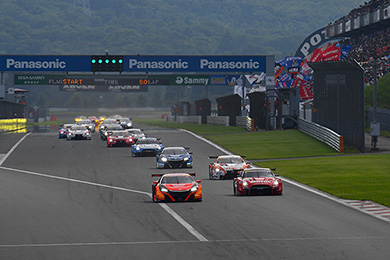
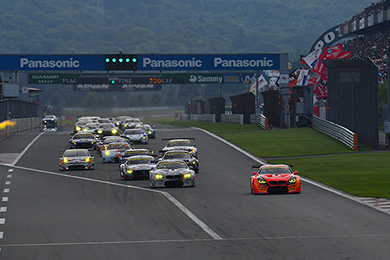
Art. 32 Start Procedures
Also, changes were made in the rules regarding the race Starting Procedure that effectively make them stricter. In this year's Starting Procedure, the grid board will be displayed at trackside in the latter half of the formation lap (signaling for vehicles to form a double file), and until the starting signal is given (green lights), cars must follow the lead of the pole-position car at 80-90km/h, and are no longer allowed to brake or speed up (effective for both GT500 and GT300 classes). In addition, whereas the starting signal was given only at the start of the race until last year, this year a starting signal (green lights, waving of the national flag, etc.) will also be given for the GT300 class.
Finally, in both the GT500 and GT 300 classes, until the starting signal is given, cars must maintain the double file formation, and not to veer outside of the lines of their starting grid space (alignment) as they start.
As such, while the basics of the Starting Procedure remain unchanged, regulations will more strongly enforce the prohibition of speeding up and/or slowing down, and require cars to maintain a strict double file after the grid board is displayed (weaving, or steering the car widely from side to side for the purpose of warming tires, will still be permitted between the time that the formation lap starts and when the grid board is displayed).
This summarizes the main changes to the Sporting Regulations for 2018, although many minor changes have been made as well. These changes all serve the ultimate purpose of providing for a safer race and ensuring that the fairness of the sport is maintained.
| 4/13-14 | Round1 OKAYAMA | |
| 5/03-04 | Round2 FUJI | |
| 6/01-02 | Round3 SUZUKA | |
| 8/03-04 | Round4 FUJI | |
| 8/31-9/01 | Round5 SUZUKA | |
| 9/21-22 | Round6 SUGO | |
| 10/19-20 | Round7 AUTOPOLIS | |
| 11/02-03 | Round8 MOTEGI |